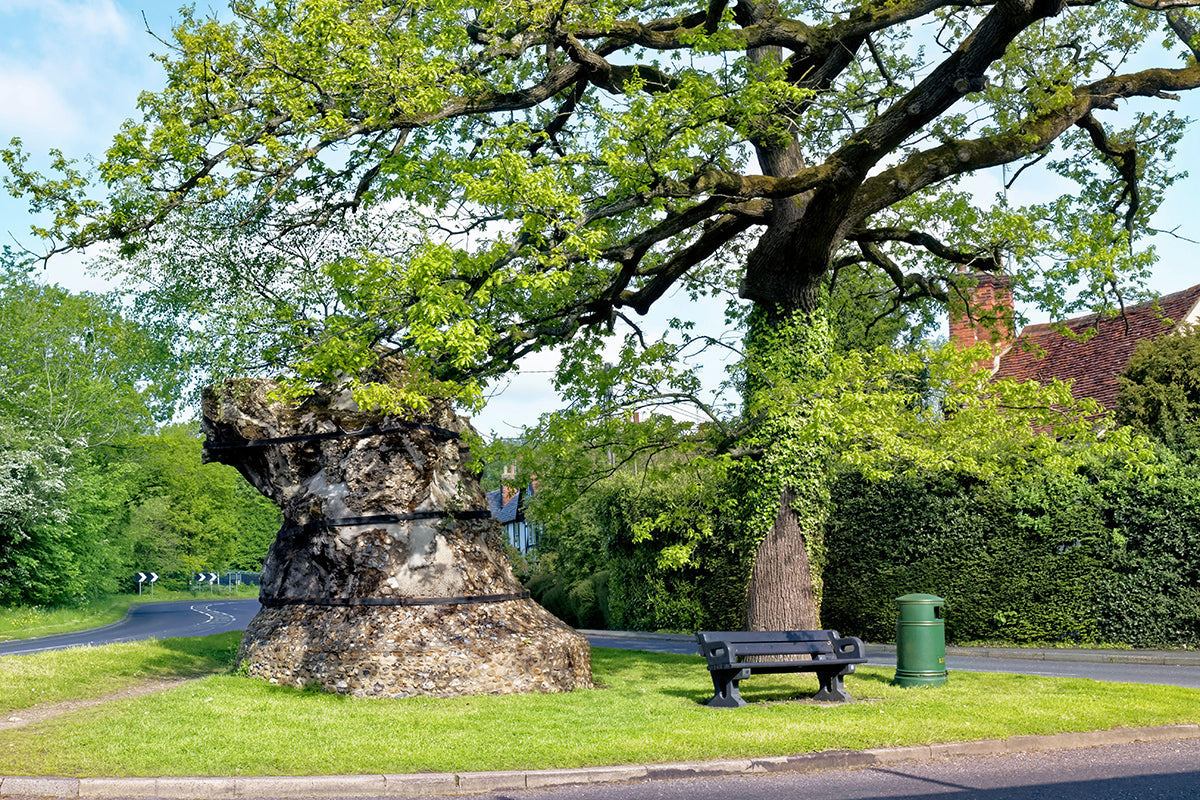Exceptional trees - The Great Yeldham Oak

When is a tree not a tree and does it need to be a living specimen to feature as one of our exceptional trees? In the case of the Great Yeldham Oak we think it does
The Great Yeldham Oak is a notable landmark in Essex history, although today's visitors will find only its concrete encased trunk. Its significance is officially recognized on the Ancient Tree Inventory as a tree of National Special Interest, though its early history is somewhat shrouded in mystery.
Common misconceptions about the tree's documentation in the Domesday Book have been definitively disproven, as this historical record contains no specific mentions of individual trees. The earliest verifiable written account of the Great Yeldham Oak appears in the 1769 'History of Essex' by Peter Muilman, who provided a detailed description of its impressive proportions. According to his account, the tree boasted a remarkable circumference of twenty-seven feet and nine inches, though its height was relatively modest at approximately eighty feet, with the main trunk extending only twelve feet before branching.
Muilman's work also preserves a fascinating piece of oral history. This account suggests the tree was already known as the 'Old Oak' several generations prior to the 1769 documentation, hinting at its considerable age even then.
A more measured viewpoint comes from Charles Sperling, a respected Essex historian whose academic credentials included membership of the Royal Historical Society. He noted that while the tree might not have been exceptional in size compared to other specimens, its prominent location at a highway junction contributed significantly to its local fame and historical interest.
Such was its reputation that James Ward, an English artist (1769-1859), depicted the tree in his masterpiece ‘The Yeldham Oak’ which he exhibited at the Royal Academy in 1834. It shows the iconic tree with Old Oak Farm and Great Yeldham church tower in the background. The large-scale painting features Ward's characteristic horses and cattle and after changing hands through generations; it now resides with English Heritage at Brodsworth Hall, South Yorkshire.
Meanwhile nearly 200 years later the tree’s carcass lives-on, encased in a metal girdle and a boot of protective flint-stone and cement.











